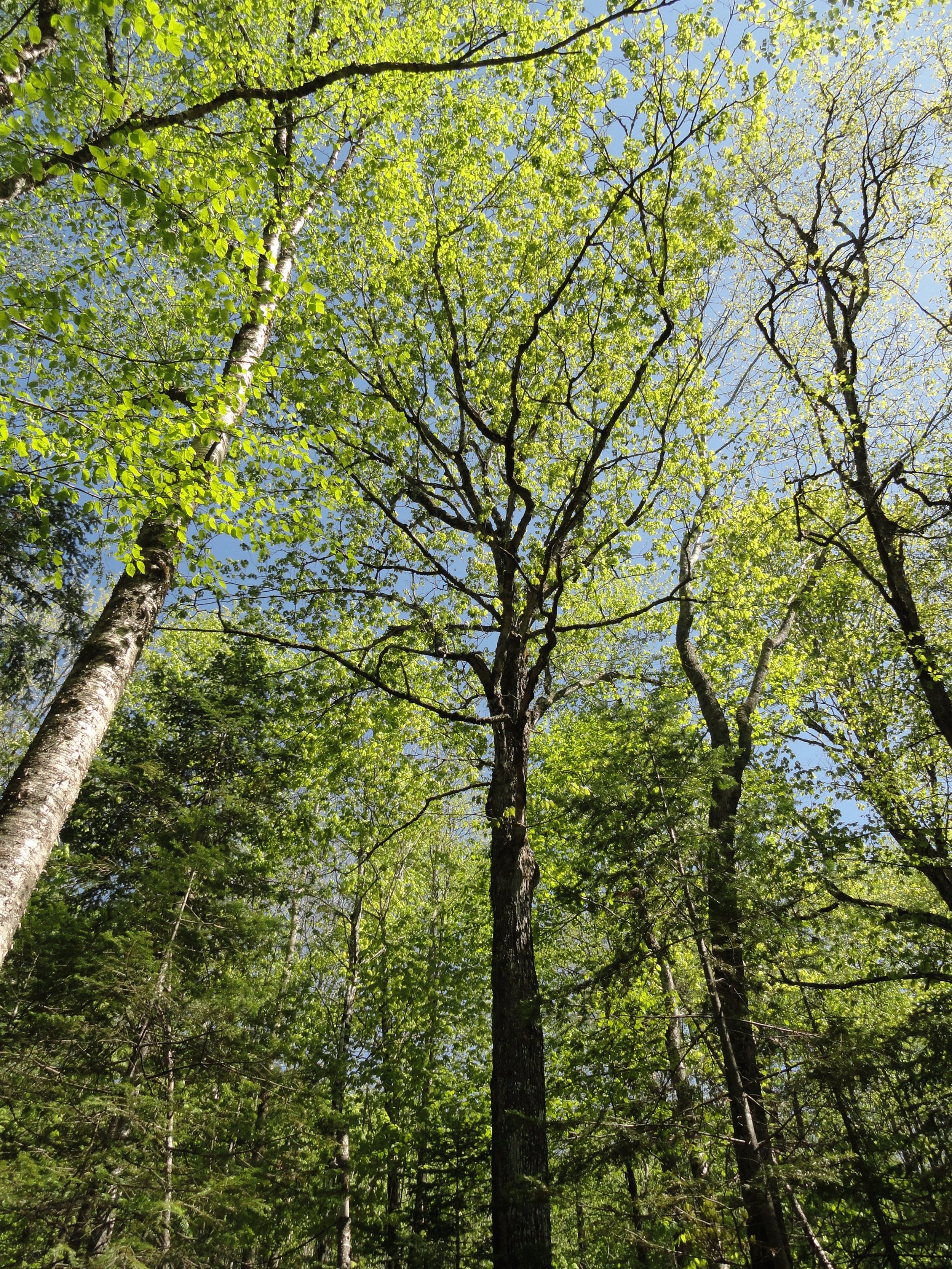The Appalachian Hardwood Forest: What makes it special?
The Appalachian Hardwood Forest
Preserving the Appalachian Hardwood Forest's Rich Legacy Amidst Threats and Climate Change
The Appalachian Hardwood Forest (AHF) is one of the oldest, richest, and most productive ecosystems in North America. It grows within the Appalachian Mountain Range, an ancient span of rocky outcrops formed from ecological processes started some 1.1 billion years ago and stretching roughly 3,200 kilometres, from Newfoundland and Labrador, across northwestern New Brunswick, down to Alabama.
The Appalachian range, spanning from northern Alabama to the Canadian Maritimes © The Nature Conservancy
What makes this forest type unique?
The Appalachian Hardwood Forest is a resilient and rich ecosystem known for extremely high biodiversity that provides sacred refuge for wildlife, such as forest songbirds, fishers (Pekania pennanti), pileated woodpeckers (Dryocopus pileatus), barred owls (Strix varia) and rare tree and plant species such as butternut (Juglans cinerea) and basswood (Tilia americana) trees, and the Canada violet (Viola canadensis). It’s productivity stems from the habitat-specific characteristics provided by the well-drained calcareous soils on uplands and lowlands, found within the Appalachian Mountain chain. A combination of nutrient-rich and moist soil qualities, unique to the AHF, creates a perfect environment for soil bacteria and enzymes to flourish, providing the right conditions for abundant and lush understory vegetation.
This undergrowth is composed of provincially rare vascular plants, bryophytes, and fungi, notably maidenhair fern (Adiantum pedatum), yellow lady’s slipper (Cyrpipedum calceolus var. pubescens) and wild ginger (Asarum canadense). There are more than 100 species of moss, 16 species of liverworts, and 53 species of forest floor flora, some common to New Brunswick, some rare or very rare to the Maritimes, and some species only found in this habitat. This combination of rare local, provincial, and regional ground flora is a key reason the Appalachian Hardwood Forest stands out as more diverse than other rich tolerant hardwood forests occurring across the Maritimes.
Another feature supporting this forest’s abundant diversity of life is the north-south orientation of the long ridges and valleys that make up the Appalachian’s forested mountains. These spans provide essential corridors and natural highways for species such as moose (Alces alces), black bear (Ursus americanus), and bobcat (Lynx rufus) to migrate from either direction during alternating seasons and cycles of warming and cooling, settling in the microclimates that best suits them.
Keeping these passageways safe and conserving the abundant and diverse habitat provided by the Appalachian Hardwood Forest is more important today than ever before.
That’s because climate change, through increasingly rising temperatures and extreme weather events, is altering and destroying wildlife habitats. Over the last few decades, plant and animal ranges are moving northward and reaching higher elevations in response to the warming climate. As natural ranges shift, species will rely more and more on the sacred refuge provided by the Appalachian Hardwood Forests.
© Dan Majka/The Nature Conservancy (adapted for print by Nicholas Rapp)
But as unique, productive and beautiful as this forest type is, it’s also among the most threatened in New Brunswick. Once spanning more than 500,000 acres, generations of clearing for agriculture, development and forestry have been hard on this productive forest. Less than one per cent of the province’s original Appalachian Hardwood Forest still stands today.
You can help us keep it from disappearing.
For more than 25 years, we have been working to identify AHF properties, build relationships with landholders, conduct site surveys, nurture opportunities and—ultimately—secure and permanently protect the land as one of our 80+ nature preserves.
This work requires a tremendous amount of commitment and resources. Your donation to our AHF campaign will do directly toward our effort to protect the remaining fragments of the Appalachian Hardwood Forest, providing a safeguarded, connected, and healthy habitat for the endemic species we hold close to our heart and who call these forests home.
Madison White, a master’s student in forestry at the University of New Brunswick, is conducting an in-depth study at several of our Appalachian Hardwood Forest (AHF) preserves. Her research focuses on understanding how different ecological factors, such as soil composition, climate, and disturbance, influence the persistence of these forests, especially in areas impacted by land clearing and other human activities.
Madison’s work explores how rich site indicators, like species such as Christmas fern (Polystichum acrostichoides) and jack-in-the-pulpit (Arisaema triphyllum), provide clues about forest health and resilience, offering valuable insights into how AHF habitats can thrive amid environmental challenges. By examining the biotic and abiotic elements that enable these forests to flourish, her research will be instrumental in guiding the Nature Trust’s restoration and conservation practices.
“Working with the Nature Trust has truly opened my eyes to conservation in action,” Madison said of her experience. “It’s given me opportunities I wouldn’t have had at university alone, like access to rare plant data and insight into the conservation world.”
This collaboration is made possible by support from the New Brunswick Wildlife Trust Fund, which has helped Madison gain essential skills and knowledge while contributing to our mission to protect New Brunswick’s unique ecosystems.









